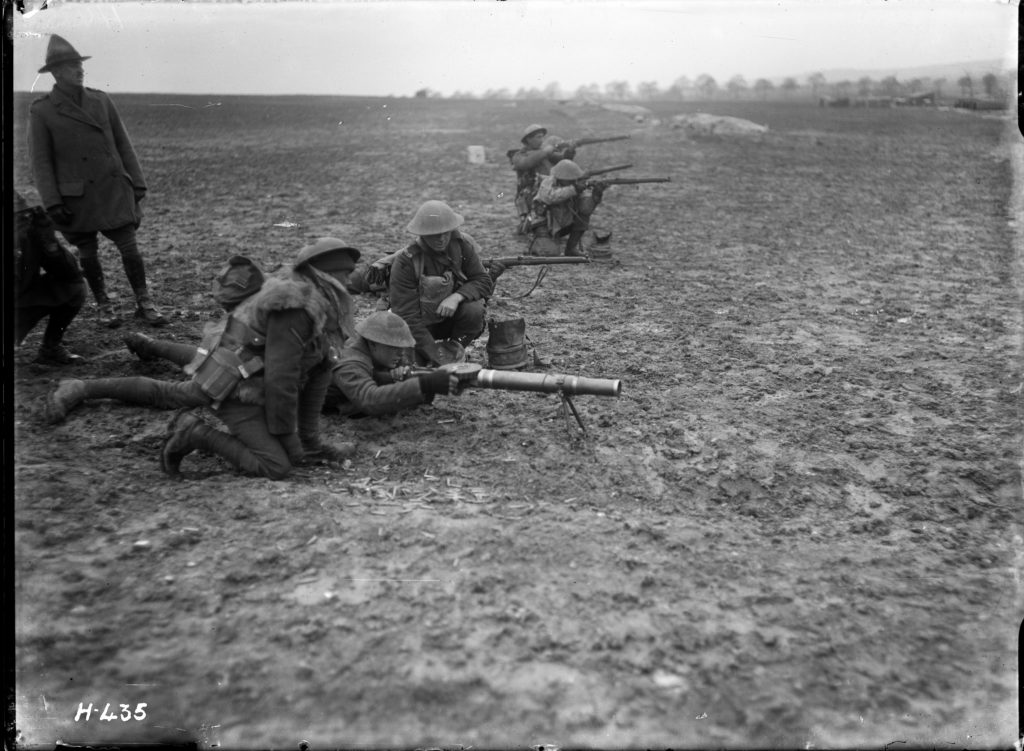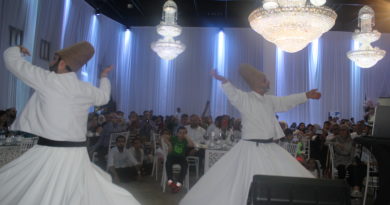Commemorations of Armistice Day start on Friday November 9th
Three days of commemorations to mark the centenary of the Armistice – the end of WW1 – started on Friday. French president Emmanuel Macron was joined by UK PM Theresa May in laying wreaths at the graves of soldiers killed in the “war to end all wars.” This will take place at Saint-Symphorien Cemetery near Mons on Friday.
The pair will be joined by Belgian Prime Minister Charles Michel for the commemorations to mark the moment when the guns finally fell silent after four long years of bitter conflict.The visits reflect a shared history and shared future, said May,
St. Symphorien Military Cemetery contains the graves of John Parr, the first UK soldier to be killed in 1914, and the last, George Ellison. He was killed on the Western Front at 09:30 GMT, before the Armistice came into effect at 11:00, 100 years ago this Sunday.
The commemoration on Friday will include vehicles from World War One, historical film footage, music and readings from letters and diaries. At the same time, the local bell ringer will perform a programme of music based on the tunes played as Canadian troops entered the city in the winter of 1918. In the evening, the Grand’Place will be the setting for a light show projected on to the wall of the 15th-century town hall.
On Sunday, about 70 world leaders including US President Donald Trump, Russia’s Vladimir Putin and Germany’s Angela Merkel will take part in a ceremony on the Champs-Elysees in Paris to mark the 100th anniversary of the end of World War One.
The European Parliament’s President Antonio Tajani will also attend the commemorative ceremony.
Armistice Day is a national holiday in Belgium and many of the commemorations here will focus on the Flemish city of Ypres from which most soldiers left for the front line, many of whom never returned.
A series of events are planned until Sunday, including the daily Last Post at 8pm, and for details on these please see the link below.As the historic commemorations got underway, it emerged that the families of 16 forgotten First World War soldiers buried in a small Belgian cemetery have been tracked down by a team of amateurs genealogists.
A group of 10 amateur historians and genealogists launched their bid to find living relatives of the forgotten soldiers in September after a Belgian historian called for help in locating any living relatives of the dead soldiers.

The soldiers, eight of who are from the 14th Fife & Forfar Yeomanry Battalion of the Black Watch, died in the village of Orcq, near Tournai, on 23 October 1918, just days before the armistice was signed, during the final battles on the Western Front.
Each year, the tiny Belgium village remembers the men, who lie in its communal cemetery, but locals said no family members had visited the graves for several generations and local historian Bernard Demaire launched the appeal to find relatives of the men while planning a special ceremony to commemorate the 100th anniversary of their death.
The outbreak of war in 1914 left many Belgians homeless and penniless and the story of the Belgian refugees is a fascinating one which, with the ongoing asylum and migrant crisis still high on Europe’s political agenda, has resonance today.
The number who fled the country from 1914-18 was approximately one-sixth of the Belgian population back then. They headed to the United Kingdom, France and the Netherlands to flee the encroaching German troops.
An estimated 250,000 no less headed to the four nations of the UK for safety. In fact, the Belgians in wartime Britain constituted the biggest single ethnic influx of refugees into Britain to date. About one in three stayed in London or its environs. The number of refugees in Wales, Scotland and Ireland together was never more than ten percent of the total Belgian community in exile in the British Isles.
Some of those who didn’t head to Britain made the relative short journey over the border to France, parts of which were occupied during WW1.
At first, the Belgian refugees were greeted with open arms and a favourite destination was Birtley in County Durham, a small industrial village that became a central hub for 4,000 new Belgian neighbours in WW1. Birtley was chosen as the site of two munitions factories, staffed entirely by Belgian soldiers, their families and other refugees. The resulting community was nicknamed “Elisabethville”, after the Belgian queen Elisabeth of Bavaria.
At its height, Elisabethville accommodated between 2-3.75% of the entire Belgian refugee population living in the UK. The personal story of Brussels botanist Jean Massart is particularly intriguing.
Ruth Pirlet, who has carried out extensive in-depth research on the impact of WW1 on Belgium for the Ostende-based Flanders Marine Institute, said that few months after the start of hostilities, Massart, from the Brussels commune of Etterbeek, suspended all his botanical studies because he believed “there was no time to lose yourself in speculations of pure science when the entire word’s political geography was at stake.”
In an article for the Institute, Ruth wrote, “He subsequently devoted his time to writing and distributing all kinds of anti-German propaganda.” But his “illegal” activities did not pass unnoticed by the German forces who kept an increasingly close eye on his family.
Ruth added, “His children had been able to leave Belgium for the Netherlands under the pretext of health problems but things were not so easy for Massart and his wife. After several failed attempts they eventually succeeded in crossing the border with the Netherlands near Bree in Limburg on 14 August 1914 under disguise and with the cooperation of an obliging customs officer.” The couple moved to Amsterdam where they were reunited with their children and his valuable collection of information was also smuggled into the Netherlands by means of a suitcase along with clothes for Belgian refugees, says Ruth.
“The whole family soon moved on to England and eventually ended up in the coastal municipality of Antibes in the south of France in autumn 1915.”
While at the start of the war, the local populations in the host countries, including the UK, were favourable to the refugees from “Poor Little Belgium”, public opinion gradually turned into mistrust and distance.
As the war dragged on, Belgian citizens lost the goodwill of the locals and began to be considered ‘cushy’ a comfortable distance from the battle fields, while their own sons and fathers were fighting on the front-line.”
Many had expected the war to be over by Christmas but it soon became it that it wouldn’t. Housing and jobs became an issue. Belgians in the purpose built villages in England had running water and electricity while their British neighbours did not.
Towards the end of the war, some 140,000 Belgians were still in the UK and some decided to remain in the country that had welcomed them.But within a year of the war ending on 11 November 1918 more than 90 per cent had returned home.
Brussels is also hosting numerous WW1 related events this weekend.
On 10 and 11 November 2018, the BELvue Museum in Brussels will commemorate the centenary. Talks, guided tours and dramatised history will complement a visit to the exhibition Brussels, November 1918. From war to peace?

The exhibition Brussels, November 1918. From war to peace?, which has attracted more than 4,500 visitors since the end of September, takes visitors back to the tormented final months of war and the direct consequences of the Armistice. Over the commemorative weekend, the BELvue Museum will offer a range of activities on this theme open to the general public.
Two talks by the exhibition’s curators are scheduled on the Saturday, each focussing on a specific topic. A talk in French by the historian Chantal Kesteloot will look back over the tumultuous 10 days between the Armistice and the ‘Joyous Entry’ into Brussels by King Albert I and the Belgian Army on 22 November. And a talk in Dutch by historian Jens van de Maele will focus on efforts to manage the refugee crisis in Brussels in November 1918. Guided tours of the exhibition have also been lined up for Saturday afternoon.
On the Sunday, the Sandra Proes Theatre Company will put on an interactive historical dramatisation. Four actors will play characters from 100 years ago: a housewife turned nurse; a miner from Belgium’s Eastern cantons, who was commandeered into the German Army and became a Belgian citizen after the Treaty of Versailles; the cultured, young pacifist teacher; and the upper-middle-class lady whose son had returned from the war with a disfigured face. The theatre company drew inspiration for its show from historical facts and actual accounts dating from the time. The show, entitled 14-18 and after, is aimed at a broad audience and will plunge visitors back in time by enabling them to interact with flesh-and-blood characters.
The exhibition is also family-friendly, with a book of games available from reception for visiting children aged between 8 and 12.
For more details on WW1 events in Ypres this weekend



